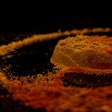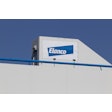
As pet food formulations evolve to meet consumer demand for high-protein, low-carbohydrate diets, pet food formulators have revisited an old ingredient, gelatin, with new interest. Once dismissed for its incompatibility with traditional processing, gelatin’s unique properties may now offer functional benefits in today’s pet food formulation, Greg Aldrich, Ph.D., Kansas State University research associate professor, in his Petfood Industry column, “Gelatin: Has its time come for pet food applications?”
Gelatin, a collagen-derived protein used for over a century in food and pharmaceutical products, has seen limited use in pet food due to its cold-set, thermally reversible nature. However, recent research suggests that under specific conditions, gelatin, particularly in low-bloom strengths, can enhance structural integrity and expansion in extruded pet foods that are low in starch. As manufacturers navigate shifting formulation demands, gelatin may emerge as a valuable, consumer-friendly tool to address current processing and product development challenges.
Here are 10 key takeaways from the article:
- Gelatin offers untapped potential in modern pet food: Although traditionally dismissed due to its processing limitations, gelatin’s unique properties could support innovation in today’s formulations.
- Processing challenges historically limited its use: Gelatin’s cold-set, thermally reversible nature (melting below 35˚C) made it incompatible with standard pet food processing methods like extrusion and canning.
- Consumer perception is favorable: Gelatin is already familiar to pet owners and generally viewed positively, potentially supporting marketing and acceptance of products containing it.
- Source and production matter: Gelatin is derived from animal byproducts (bones and skins of pigs, cattle, or fish) and comes in two types—A and B—depending on acid or alkali processing methods.
- Quality is defined by bloom strength: Gelatin's functionality is measured by bloom strength (50 to 300 grams), which indicates gel firmness and is a key specification for selecting the right type for a given application.
- Currently limited in pet food: Its use today is mostly in molded pet treats, like dental chews, or as a visual component (aspic) in canned foods, not for structural or functional purposes.
- Emerging role in high-protein diets: As more pet foods shift to high-protein, low-starch formulations, gelatin may help address issues like poor kibble expansion and brittleness.
- May support kibble structure: Low-bloom gelatin has shown potential in research to improve expansion and durability in extruded products by interacting with starch during processing.
- Reconsideration is warranted: Earlier failures using gelatin may have stemmed from mismatched product needs or incorrect specifications. Modern demands may align better with its functional benefits.
- Opportunity for innovation: Strategically leveraging different gelatin bloom strengths and their interactions with starch could yield novel pet food textures, shapes, and processing efficiencies.















